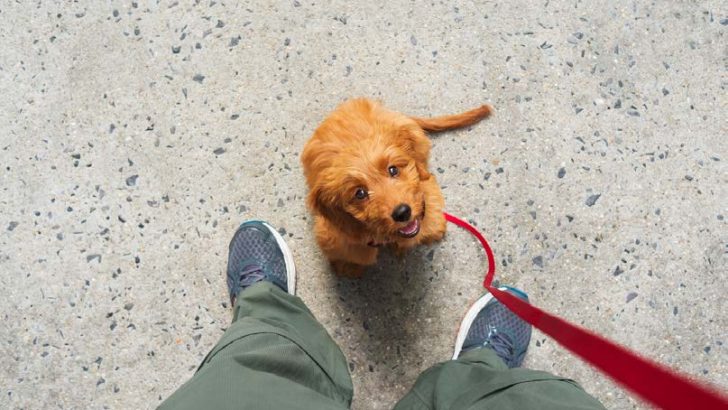
The first or second day I bring a puppy home, even before I teach the puppy his name, recall, or anything else, the very first thing I teach is to focus on me—making eye contact. Specifically, I want the puppy to look away from something he wants and focus on me instead. That “want” could be a treat, greeting another person or dog, a toy, going outside, or anything else at the moment. Later, I’ll work on how behaviors, rewards, and what I call a “reset” fit together. But teaching the dog that focusing on me is the key to getting what he wants is the first thing I focus on.
Why eye contact?
- It promotes calm behavior.
- It’s easy for us to notice; the dog is either looking at us or not.
- It helps control impulses, so the dog doesn’t grab the toy or treat.
- The dog learns to offer or choose focus to get what he wants.
Eye Contact Step 1:
Begin by holding a treat to the side, at arm’s length from your face, and allow your dog to naturally make eye contact with you. The dog might try jumping, barking, or mouthing your hand. Make sure you keep your elbow braced at your side and don’t move your hand! I prefer holding the treat just out of reach so the dog can’t grab it by standing on hind legs. Once the dog makes eye contact, use your verbal marker or click, pause briefly, and then reward with the treat from the same hand.
Once the dog can focus on you with a treat in one hand held out to the side, practice this in short sessions throughout the week. Hold the treat in different positions, like the different hours on a clock, and expect the dog to look at you. The toughest challenge for the dog is when the treat is right in front of their face. If the dog jumps, barks, or tries to grab the treat, stay silent and keep your hand still. Wait for the dog to calm down and make eye contact. Don’t give any commands, say “Leave it,” or make any movements. The dog will learn that these behaviors don’t work because there’s no reward signal.
Video: Here is Ones as an adorable baby puppy learning this skill
Eye Contact Step 2:
Letting the dog relax between repetitions. Do the same as in step 1, but now make sure your dog moves out of position when you give them the food after the reward signal. Sometimes dogs sit down because it’s easier to control themselves, but they might still struggle to stay calm if they don’t think they’re supposed to stay put.
Eye Contact Step 3:
Using a remote reward. Place the treats in a bowl on a chair, table, or another surface. If your dog can’t leave the treat bowl alone, even with a “Leave it” command, put the bowl out of reach. (Self-control around the bowl isn’t the main point of this exercise, but it’s a great skill to have.) Stand next to the treat bowl with your hands by your side, wait for the dog to make eye contact, give the reward signal, and then reach into the bowl for the treat. Slowly increase the distance between you and the bowl.
Eye Contact Step 4:
Start practicing eye contact with other things your dog enjoys. For example, if your dog likes playing with a ball, hold the ball instead of the treat, give the reward signal, and then toss the ball as a reward. Also, use the idea of eye contact in your dog’s daily routine. Have your dog look at you before going outside, eating, or getting a treat or attention. You can also include eye contact in obedience commands. For example, if your dog knows how to sit, praise them for sitting but reward them for sitting and making eye contact.
Here’s an example: Bayles is learning to make eye contact before getting the signal to bite the ball. This is a crucial step for teaching obedience or agility around exciting toys. Notice how I give her some free throws in between, and her eagerness to drop the ball for me slows down. This is important to note!
Bayles eye contact for bite toy
As your dog gets better at these behaviors, they’ll start to offer focus to get what they want, like biting the helper, entering the agility ring, or choosing to focus on you instead of a toy or the environment. Focus and attention towards the handler will become your dog’s default behavior, especially when they want something.
